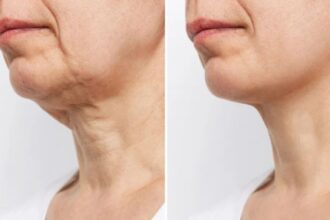Introduction to Zepbound and its uses
Are you curious about Zepbound and how it can enhance your health and wellness? This innovative treatment option is making waves in the medical community, offering a range of benefits for those looking to improve their quality of life. Whether you’re dealing with chronic conditions or seeking preventive care, understanding where to inject Zepbound is crucial for maximizing its effectiveness. In this blog post, we’ll explore everything you need to know—from the best areas of the body for injections to tips on finding qualified healthcare professionals. Let’s dive into the world of Zepbound and discover how it can work for you!
Areas of the body where Zepbound can be injected
Zepbound can be injected in various areas of the body, tailored to specific treatment goals. Commonly targeted regions include the abdomen and thighs, where fat reduction is often desired.
Another popular site for injection is the upper arms. Many people seek to enhance their appearance by addressing stubborn fat deposits here.
The back area also benefits from Zepbound injections, especially for those looking to contour their physique. Areas like love handles may see significant improvement with this treatment.
Facial applications are emerging as well. Patients want a more youthful look without invasive procedures.
Each injection site has its unique advantages based on individual needs and aesthetic goals. Prior consultation with healthcare professionals ensures optimal results while maintaining safety standards.
Best practices for injecting Zepbound
When it comes to injecting Zepbound, preparation is key. Always begin by ensuring the environment is clean and sterile. This helps minimize the risk of infection.
Before administering the injection, check the product for any discoloration or particles. If anything seems off, do not use it.
Selecting the right technique matters too. Choose an appropriate site on your body that allows easy access yet minimizes discomfort.
Use a new syringe every time for each injection. Proper disposal of used needles is also crucial to maintain safety.
After injecting Zepbound, apply gentle pressure to reduce swelling at the site. It’s advisable to avoid strenuous activity immediately after treatment to allow your body ample time to adjust.
Following these guidelines can significantly enhance both effectiveness and comfort during your experience with Zepbound injections.
Potential risks and side effects of Zepbound injections
Zepbound injections, like any medical treatment, carry potential risks and side effects. It’s essential to be aware of these before proceeding.
Common reactions may include redness or swelling at the injection site. Some individuals report mild bruising as well. These symptoms often resolve on their own within a few days.
More serious side effects can occur but are less common. Allergic reactions might present with itching, rashes, or difficulty breathing. If you experience any severe symptoms after an injection, seek immediate medical attention.
Other concerns include infection risk due to improper techniques during administration. Ensuring that your healthcare provider follows strict hygiene practices is crucial for safety.
Long-term impacts remain unclear since Zepbound is relatively new in the market. Ongoing studies aim to clarify its full profile regarding safety and efficacy over time. Always discuss your health history with your provider before starting treatment to tailor it specifically for you.
Tips for finding a qualified healthcare professional for Zepbound injections
When seeking a qualified healthcare professional for Zepbound injections, start by researching local clinics or specialists. Look for facilities that focus on pain management or aesthetic treatments.
Check credentials carefully. Ensure the provider has relevant training and experience with injectable therapies. This background is crucial for safe administration.
Read reviews and testimonials from previous patients. Their experiences can provide valuable insight into the provider’s skills and patient care approach.
Ask about their consultation process. A good professional should take time to discuss your medical history, answer questions, and address concerns before proceeding with treatment.
Don’t hesitate to seek recommendations from trusted friends or family members who have undergone similar treatments. Personal referrals often lead you to reliable providers in your area.
Trust your instincts during initial consultations; feeling comfortable and respected is essential when choosing someone for this procedure.
Alternative methods of using Zepbound
Zepbound isn’t just limited to injections. There are alternative methods that can also harness its benefits effectively.
Topical applications have emerged as a popular choice for those wary of needles. Creams infused with Zepbound allow for localized treatment, targeting specific areas without the need for injections. This method offers convenience and ease of use.
Oral supplements present another option. These formulations enable systemic absorption, providing broader effects on the body while being user-friendly.
Incorporating Zepbound into physical therapy sessions is gaining traction too. By combining movement therapies with Zepbound’s properties, patients may experience enhanced recovery from injuries or chronic pain conditions.
Exploring these alternatives can help individuals find the most suitable approach tailored to their lifestyle and comfort level. Each method has its unique advantages worth considering based on personal preferences and medical advice.
Conclusion: Understanding the proper usage of Zepbound is important for safe and effective treatment
The proper usage of Zepbound is crucial for anyone considering this treatment. Knowledge about the correct injection sites and techniques can significantly affect outcomes.
Patients should be aware of both the benefits and potential risks associated with Zepbound. Proper education helps in minimizing complications, ensuring a smoother experience overall.
Choosing a qualified healthcare professional makes a big difference. Their expertise can guide patients through each step safely.
It’s also essential to stay informed about alternative methods available for those who may not be suitable candidates for injections. Exploring these options can lead to better health decisions tailored to individual needs.
Understanding how to use Zepbound effectively empowers individuals in managing their health journey confidently. Being proactive about one’s treatment plan fosters trust between patient and provider, leading to optimal results.
FAQs
Understanding how to use Zepbound safely and effectively is essential for anyone considering this treatment. Familiarizing yourself with the proper injection sites, best practices, and potential risks can significantly enhance your experience.
FAQs
Q: What is Zepbound used for?
A: Zepbound is primarily used to treat various medical conditions such as chronic pain, inflammation, and certain dermatological issues. Always consult a healthcare professional to understand its specific applications.
Q: Where can I inject Zepbound?
A: Zepbound injections are typically administered in areas like the upper arms, thighs, abdomen, or buttocks. The choice of site may depend on the condition being treated.
Q: Are there any side effects associated with Zepbound injections?
A: Yes, some individuals may experience side effects such as swelling at the injection site, mild pain, or allergic reactions. Discuss these possibilities with your healthcare provider.
Q: How do I find a qualified practitioner for Zepbound injections?
A: Look for licensed professionals who specialize in administering injectable treatments. Check credentials and read reviews from other patients before making an appointment.
Q: Can I use Zepbound through alternative methods besides injections?
A: Yes! Depending on your condition and preferences, there might be alternative forms available—such as topical applications or oral medications—but always seek advice from a qualified practitioner first.

















